Low Back Pain Relief Strengthening Exercises: How To Dynamically Stretch And Release Hip Flexor Tightness For Athletes, Beginners, Bodybuilders, Runners, & Seniors
Discover these little known low back pain relief strengthening exercises. Learn how to dynamically stretch and release hip flexor tightness for athletes, beginners, bodybuilders, runners, and seniors.
How To Stretch Hip Flexors
“Why Are My Hip Flexors so Tight?” How To Stretch Hip Flexors (Release Or Strengthen?)
Post and video by Dr. Joe LaCaze, founder of RotexMotion
Concerning how to stretch hip flexors, I have seen, performed and taught every conceivable method of releasing them from tightness.
As a flexibility specialist, I stretched thousands of patients and athletes using the most popular muscle and fascial release techniques. I got so proficient with these stretch techniques, I taught seminars to other doctors and therapists…
- Active Isolated Stretching,
- Post Isometric Release Technique,
- Soft Tissue Release Technique (very similar to Active Release).
As a neuromuscular therapist, I performed soft tissue techniques to release muscles from strain and tightness. I learned how to perform manual Trigger Point Therapy from a few masters.
As a performance enhancement specialist, I integrated PNF (Proprioceptive Neuromuscular Facilitation) stretching and neuromuscular therapy with dynamic exercise for reestablishing normal movement patterns for the muscles and fascia we worked on.
This journey was all in an effort to discover how to stretch hip flexors and release strain and tightness for two main reasons – to create more…
- Stability in the lower back and pelvis, and
- Mobility in the hips and the thoracic spine.
We have been in the habit of looking at certain muscles like how to stretch hip flexors, and thinking they are too short and tight. Here’s what we’ll cover in this post:
- Logical thing to do with short tight muscles,
- Primary hip flexors causing problems, &
- 4 Reasons hips flexors are short and tight.
Logical thing to do w/ short tight muscles
In the past 15 years, with the help of some of the most renowned doctors, therapists, strength coaches, trainers and skills coaches, I have developed a much different view on how to treat these short, tight muscles. It has completely changed my understanding of how to stretch hip flexors.
If we have short, tight hip flexors, we should ask ourselves:
- “WHY are they so short and tight?” And,
- “WHAT are the restrictions to these muscles performing to their highest capability”?
Primary hip flexors causing problems
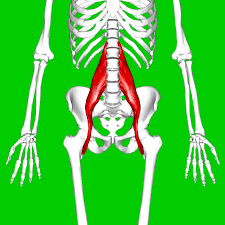
How To Stretch The Hip Flexor: psoas major muscle
There are four primary hip flexors but the one we hear about most, the one that causes us the most problems is the psoas major muscle. When we hear or read about the psoas major, 99% of the problems associated are attributed to it being short and tight.
The psoas major is responsible for lifting the thigh once it gets to 90° (parallel the floor), and everything after that, about another 45%. So it would seem that if it is short and tight, it would easily be able to lift the thigh to its limit. That is actually opposite to what happens.
If it is short and tight, it will also be weak and won’t be able to perform its normal function to full capacity. There are also neurological reasons it won’t be able to perform, but that’s a little complicated for this article.
Important to swinging and throwing athletes, the psoas major is also responsible for stabilizing the lower back, that is where it attaches to the lower spine. If the psoas major is short, tight and weak, it does a poor job of stabilizing against dynamic rotation and puts the lower back at high risk of injury.
The lower back will also become tighter as a protective mechanism and will not completely release its tension until the psoas major is strengthened through its entire range of motion, among other things.
4 Reasons hips flexors are short and tight
Problem #1
There are restrictors to the movement of the psoas major. These are mainly the deep hip muscles (the deep external hip rotators) and the hamstrings.
Solution to #1
Strengthen these muscles, don’t constantly stretch them. A strong muscle is much more flexible than a weakened muscle due to constant stretching.
Problem #2
The psoas major is WEAK because it has been constantly stretched, massaged, released, etc.
Solution to #2
Since the psoas major is almost 100% responsible for lifting the thigh past 90° to about 135%, it needs to be strengthened against some sort of resistance through its entire range of motion.
Problem #3
Almost everyone in our society sits for most of our non-athletic activities – driving, working at a desk, watching TV, reading, texting, etc.
Solution to #3
If we sit as part of our lifestyle, we will probably not change that. What we CAN do is to super strengthen our glutes, hamstrings and the deep external hip rotators. Those are the opposite muscles to the sitting muscles and they will help to release them as soon as we stand up and start moving.
Problem #4
If the hip flexors are unequal in the balance of strength, they will not be able to lift the thigh symmetrically. If the psoas major is weak, a muscle called the TFL (tensor fascia lata) will pull the hip and thigh outward and will create very complicated problems that are difficult to resolve in both the hips and lower back.
Solution to #4
Strengthen the TFL and hip in internal hip rotation against a strong rotational resistance, THEN strengthen the psoas major through its full lifting action, against resistance.
For those who have access to the two RotexMotion floor models, here’s the Inward Hip Rotation exercise to accomplish this…
- Thoracic (Upper Back) Extension, Flexion, & Rotation Baseball Softball Exercises | Foam Roll, Seated Mobility, Strengthening, & Stretching - September 6, 2022
- Low Back Pain Relief Strengthening Exercises: How To Dynamically Stretch And Release Hip Flexor Tightness For Athletes, Beginners, Bodybuilders, Runners, & Seniors - August 8, 2022

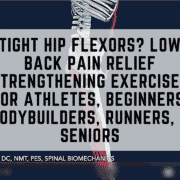
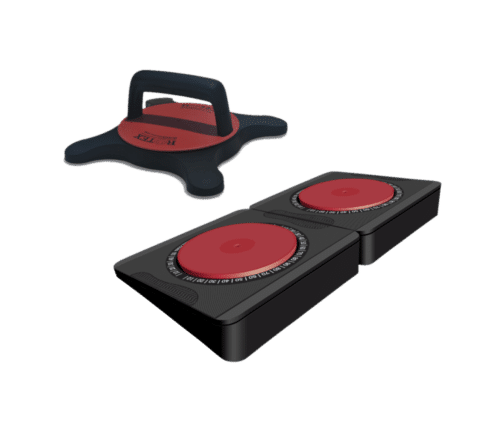
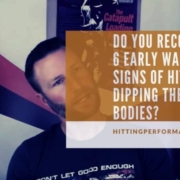

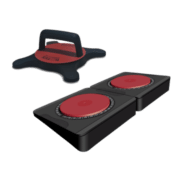
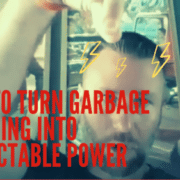


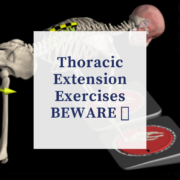
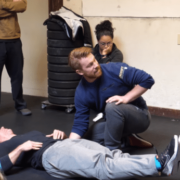



Leave a Reply
Want to join the discussion?Feel free to contribute!